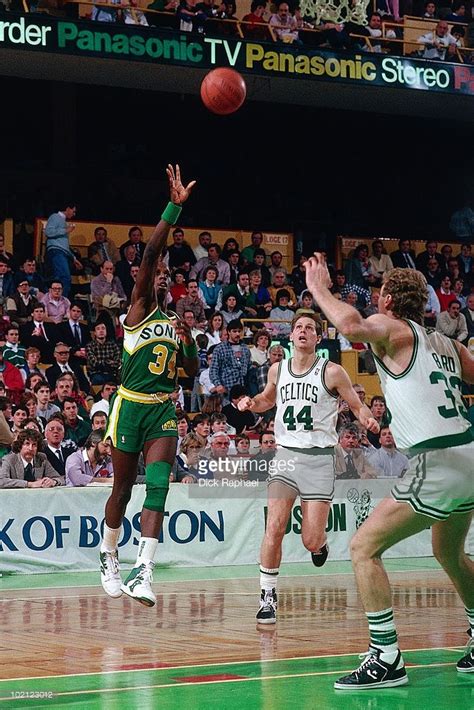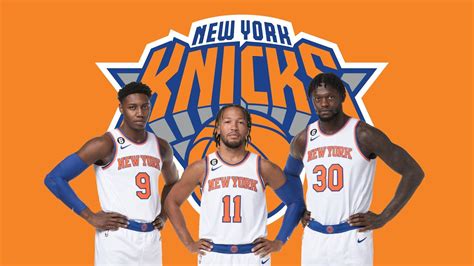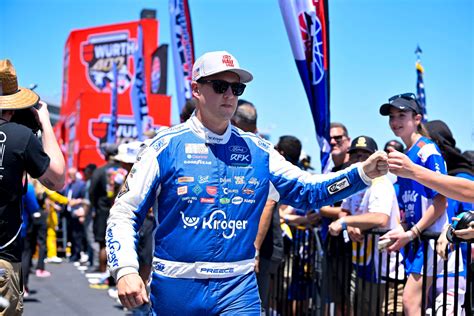
Larry Bird possessed an unparalleled “it” factor exceeding that of any other player, according to Boston Celtics President of Basketball Operations Danny Ainge, who emphasized Bird’s unique ability to elevate his teammates’ performance and deliver clutch plays consistently.
Boston Celtics President of Basketball Operations Danny Ainge has unequivocally stated that Larry Bird’s intangible qualities, his “it” factor, surpasses that of any player he has ever witnessed, including luminaries like Michael Jordan and LeBron James. Ainge, who played alongside Bird for several seasons and has observed countless NBA talents throughout his career as a player, coach, and executive, made the assertion during a recent interview, highlighting Bird’s uncanny ability to not only excel individually but also to elevate the performance of his teammates in critical moments.
“I’ve never seen a player that affects winning more than Larry Bird,” Ainge declared. “There are players with greater athleticism, greater skill sets in certain areas, but Larry’s ‘it’ factor, his ability to make the right play at the right time, his court vision, his passing, his shooting, his competitiveness, and his overall impact on the game are unmatched.”
Ainge’s comments underscore the enduring legacy of Bird, a three-time NBA champion, three-time MVP, and twelve-time All-Star, who is widely regarded as one of the greatest basketball players of all time. Bird’s impact extended beyond statistics; his presence on the court instilled a sense of confidence and determination in his teammates, transforming the Celtics into a perennial contender throughout the 1980s.
The “it” factor, often discussed but rarely quantified, refers to the intangible qualities that separate good players from truly exceptional ones. It encompasses a combination of leadership, clutch performance, court awareness, competitive drive, and the ability to inspire others. Ainge contends that Bird possessed these qualities in abundance, making him a unique and irreplaceable figure in NBA history.
“It’s not just about scoring points,” Ainge explained. “It’s about making the right pass to the open man, setting a screen that frees up a teammate for a shot, grabbing a crucial rebound, or making a defensive stop when the game is on the line. Larry always seemed to know what to do in those moments, and he always delivered.”
Bird’s legendary competitiveness was a defining characteristic of his career. He thrived under pressure, relishing the opportunity to compete against the best players in the league, including his arch-rival Magic Johnson of the Los Angeles Lakers. Their rivalry captivated the nation and helped to revitalize the NBA in the 1980s.
“Larry was fearless,” Ainge recalled. “He never backed down from a challenge. He wanted to be the best, and he worked tirelessly to achieve that goal. His competitive spirit was contagious, and it inspired all of us to raise our level of play.”
Ainge also emphasized Bird’s exceptional basketball IQ, noting his ability to anticipate plays and make split-second decisions that often resulted in positive outcomes for the Celtics. Bird’s court vision was unparalleled, allowing him to see passing lanes that others simply missed.
“Larry had a sixth sense on the court,” Ainge said. “He knew where everyone was supposed to be, and he always seemed to make the right read. His passing was incredible, and he could thread the needle with pinpoint accuracy. He made everyone around him better.”
The Celtics experienced a period of unprecedented success during Bird’s tenure, winning championships in 1981, 1984, and 1986. Bird’s leadership and performance were instrumental in each of those title runs. He consistently rose to the occasion in the playoffs, delivering clutch performances that cemented his legacy as one of the game’s all-time greats.
“Larry was a winner,” Ainge stated. “He did whatever it took to help the team win. He was selfless, he was dedicated, and he was always willing to put the team first. He was the ultimate teammate.”
Ainge’s comments serve as a reminder of Bird’s enduring impact on the game of basketball. While individual statistics and athletic ability are important, the “it” factor, the intangible qualities that elevate a player from good to great, is often the deciding factor in determining a player’s legacy. In Ainge’s view, Bird possessed this “it” factor in abundance, making him a unique and unparalleled figure in NBA history. He believes Bird’s mental toughness, combined with his unique skill set, is what made him so special.
“You can’t measure the impact a player like Larry Bird has on his team and the game. He was so far ahead of his time and that is why he will always be in the conversation as the best to ever do it,” Ainge concluded.
Bird’s career was cut short by back problems, forcing him to retire in 1992 at the age of 35. However, his impact on the game continues to be felt today. He remains an inspiration to aspiring basketball players around the world, and his legacy as one of the greatest players of all time is secure.
The discussion around Bird’s “it” factor isn’t just about nostalgia. It’s a reflection of the changing landscape of basketball analysis, where advanced metrics and statistical models often dominate the conversation. While these tools provide valuable insights, they often fail to capture the intangible qualities that define a player’s impact on the game. Bird’s case serves as a reminder that there are aspects of basketball that cannot be quantified, and that these qualities are often the most important in determining a player’s success.
Ainge’s perspective is particularly significant given his extensive experience in the NBA. He played alongside Bird, witnessed his leadership firsthand, and has evaluated countless players throughout his career as an executive. His endorsement of Bird’s “it” factor carries considerable weight within the basketball community. It reinforces the notion that Bird’s impact extended far beyond his statistical accomplishments.
Furthermore, the comparison to modern superstars like LeBron James and Michael Jordan is noteworthy. Both James and Jordan are widely regarded as two of the greatest players in NBA history, and their accomplishments are well-documented. However, Ainge’s assertion that Bird’s “it” factor surpasses even theirs highlights the unique and irreplaceable nature of Bird’s contribution to the game. It suggests that Bird possessed qualities that were distinct from, and perhaps even superior to, those of his contemporaries.
The “it” factor also speaks to Bird’s ability to adapt and thrive in different situations. He was a versatile player who could score, pass, rebound, and defend at a high level. He was also a master of the mental game, capable of outsmarting his opponents and making clutch plays when it mattered most. This versatility and mental toughness were key components of his “it” factor.
In conclusion, Danny Ainge’s statement about Larry Bird’s “it” factor underscores the enduring legacy of one of the greatest players in NBA history. Bird’s impact on the game extended far beyond statistics, and his ability to elevate his teammates and deliver clutch performances remains unparalleled. Ainge’s perspective, as a former teammate and experienced NBA executive, carries considerable weight and reinforces the notion that Bird possessed a unique and irreplaceable set of qualities that made him a truly exceptional player. The conversation keeps Bird in the top echelon of basketball legends, sparking debates about the value of intangible assets against tangible accomplishments. This ensures his place in the pantheon of the sport’s greatest ever.
FAQ: Larry Bird’s “It” Factor
1. What exactly is meant by Larry Bird’s “it” factor,” according to Danny Ainge?
Danny Ainge describes Larry Bird’s “it” factor as a combination of leadership, clutch performance, court awareness, competitive drive, and the ability to inspire his teammates, all of which contributed to winning. It encompasses Bird’s capacity to make the right play at the right time, his exceptional court vision, passing ability, shooting, and overall competitiveness. Ainge believes that Bird’s impact on winning surpasses that of other players with potentially greater athleticism or skill sets in specific areas.
2. Why does Danny Ainge’s opinion on Larry Bird carry so much weight?
Danny Ainge’s opinion is highly respected due to his extensive experience in the NBA. He played alongside Larry Bird, witnessing his leadership and abilities firsthand. Additionally, he has served as a coach and executive, evaluating countless players throughout his career. This unique perspective gives his assessment of Bird’s “it” factor significant credibility within the basketball community.
3. How does Bird’s “it” factor compare to that of Michael Jordan and LeBron James, according to Ainge?
Ainge asserts that Larry Bird’s “it” factor surpasses that of even Michael Jordan and LeBron James, both considered among the greatest NBA players. This statement emphasizes the unique and irreplaceable nature of Bird’s contribution to the game. While acknowledging the exceptional talent of Jordan and James, Ainge believes Bird possessed intangible qualities that set him apart and made him exceptionally impactful.
4. In what ways did Larry Bird demonstrate his “it” factor during his playing career?
Larry Bird consistently demonstrated his “it” factor through several key attributes and actions:
- Clutch Performances: Delivering exceptional performances in critical game situations, especially during playoffs and championship runs.
- Court Vision: Making pinpoint accurate passes to open teammates, often seeing opportunities others missed.
- Leadership: Instilling confidence and determination in his teammates, driving the Celtics to become perennial contenders.
- Basketball IQ: Anticipating plays and making quick, smart decisions that benefited the team.
- Versatility: excelling in scoring, passing, rebounding and defense at a high level.
5. How did Larry Bird’s rivalry with Magic Johnson contribute to his “it” factor and legacy?
Larry Bird’s rivalry with Magic Johnson was a defining aspect of his career, significantly contributing to his “it” factor and legacy. The competition between Bird and Johnson, representing the Boston Celtics and Los Angeles Lakers respectively, captivated the nation and helped revitalize the NBA in the 1980s. This rivalry pushed Bird to consistently elevate his performance, reinforcing his competitive drive and cementing his status as one of the game’s all-time greats. The constant pressure to outshine Johnson highlighted Bird’s mental toughness and ability to thrive under intense scrutiny.
6. What were some key statistics that showed Larry Bird’s dominance during his NBA Career? While statistics don’t fully capture his “it” factor, Larry Bird’s career averages and achievements were outstanding. He was a 3-time NBA Champion (1981, 1984, 1986), 3-time NBA MVP (1984-1986), 12-time NBA All-Star, and a 2-time NBA Finals MVP (1984, 1986). His career averages include 24.3 points, 10.0 rebounds, and 6.3 assists per game. His shooting percentages were also impressive, with a career field goal percentage of 49.6% and a three-point percentage of 37.6%, during a time when the three-point shot wasn’t as heavily emphasized as it is today. These numbers, combined with his team success, reflect his exceptional all-around game and impact.
7. How did Larry Bird’s work ethic contribute to his “it” factor?
Larry Bird’s relentless work ethic was a crucial component of his “it” factor. He was known for his dedication to improving his skills, constantly practicing and honing his craft. His commitment to being the best motivated his teammates and set a high standard for the entire Celtics organization. This dedication, combined with his natural talent, is a testament to why he was consistently ranked as one of the top players.
8. How did Larry Bird’s injuries ultimately affect his career and legacy?
Larry Bird’s career was unfortunately cut short due to persistent back problems, leading to his retirement in 1992 at the age of 35. While his premature retirement prevented him from potentially achieving even greater statistical accomplishments, it arguably enhanced his legacy. It left fans wondering what more he could have achieved, and solidified his reputation as a player who gave everything he had while he could.
9. What specific qualities did Larry Bird possess that cannot be measured by statistics?
Several intangible qualities contributed to Larry Bird’s “it” factor that cannot be fully captured by statistics. These include:
- Leadership by Example: His ability to inspire his teammates through his actions and dedication.
- Mental Toughness: His unwavering focus and composure in high-pressure situations.
- Competitive Drive: His fierce determination to win at all costs.
- Selflessness: His willingness to prioritize the team’s success over individual achievements.
- Court Awareness and Intuition: His uncanny ability to anticipate plays and make smart decisions.
10. What lessons can modern NBA players and aspiring athletes learn from Larry Bird’s “it” factor?
Modern NBA players and aspiring athletes can learn several valuable lessons from Larry Bird’s “it” factor:
- Develop Intangible Qualities: Focus on cultivating leadership, teamwork, mental toughness, and competitive drive, as these are crucial for achieving sustained success.
- Prioritize Team Success: Place the team’s goals above individual achievements, recognizing that collective success is more rewarding and impactful.
- Embrace Versatility: Strive to become a well-rounded player capable of contributing in multiple facets of the game.
- Outwork Your Opponents: Dedicate yourself to continuous improvement through hard work and dedication, mirroring Bird’s relentless work ethic.
- Master the Mental Game: Develop a strong mental approach to the game, focusing on composure, decision-making, and strategic thinking.
11. Besides Ainge, which other players or coaches have commented on Bird’s ‘it’ factor?
Many of Bird’s contemporaries have echoed Ainge’s sentiments. Magic Johnson often speaks about how Bird pushed him to be better and his respect for Bird’s all-around game. Kevin McHale, another teammate, has highlighted Bird’s competitive fire and willingness to do whatever it took to win. Coaches like Chuck Daly, who coached against Bird, have acknowledged his incredible basketball IQ and court awareness.
12. What was Larry Bird’s impact on the popularity of the NBA during the 1980s?
Larry Bird, along with Magic Johnson, is widely credited with revitalizing the NBA in the 1980s. Their rivalry and contrasting styles brought new fans to the sport and made the NBA a global phenomenon. Bird’s Celtics and Johnson’s Lakers faced off in multiple NBA Finals, creating must-watch television and generating immense excitement. Bird’s blue-collar image and Johnson’s Showtime style captivated audiences and helped to elevate the NBA to new heights.
13. How did Bird’s playing style differ from other NBA superstars of his era?
While other superstars relied heavily on athleticism and scoring prowess, Bird’s game was built on intelligence, skill, and court awareness. He wasn’t the fastest or most athletic player, but he consistently outsmarted his opponents with his passing, shooting, and positioning. His ability to anticipate plays and make the right decisions made him a unique and effective player.
14. What are some of the most memorable plays that exemplify Bird’s “it” factor?
Several plays stand out as prime examples of Bird’s “it” factor. One is his steal and game-winning assist to Dennis Johnson in Game 5 of the 1987 Eastern Conference Finals against the Detroit Pistons. Another is his clutch three-pointer in the final seconds of Game 6 of the 1986 NBA Finals against the Houston Rockets. These plays demonstrate his ability to perform under pressure and make game-changing contributions when it mattered most.
15. How has Larry Bird influenced the game of basketball after his playing career?
After his playing career, Larry Bird continued to impact the game as a coach and executive. He coached the Indiana Pacers from 1997 to 2000, leading them to the NBA Finals in 2000 and winning the NBA Coach of the Year award in 1998. He later served as the Pacers’ President of Basketball Operations, helping to build a competitive team. His success as a player, coach, and executive demonstrates his deep understanding of the game and his ability to lead and inspire others.
16. Did race play any role in the Bird-Magic rivalry’s popularity?
While both Bird and Magic downplayed the racial aspect, it’s undeniable that the fact that Bird was white and Johnson was black contributed to the narrative. The media often framed the rivalry as a battle between a white star from a blue-collar background and a black star with flashy moves, playing into existing racial dynamics. While the focus remained on their basketball skills, the racial subtext was unavoidable and added another layer of intrigue to the rivalry.
17. How did Larry Bird’s background influence his approach to basketball?
Larry Bird grew up in French Lick, Indiana, in a modest family. His upbringing instilled in him a strong work ethic and a humble attitude. He learned to appreciate the value of hard work and teamwork, and he never took his success for granted. His background also gave him a down-to-earth persona that resonated with fans.
18. What are some lesser-known facts about Larry Bird that highlight his unique personality?
One lesser-known fact is that Bird was a talented baseball player in high school and could have pursued a career in that sport. Another is that he briefly dropped out of Indiana University before enrolling at Indiana State. These facts highlight his versatility and his independent spirit. He was also known for his trash-talking on the court, which was often humorous and intended to get into his opponents’ heads.
19. What is the legacy of Larry Bird beyond his championships and individual awards?
Beyond his championships and individual awards, Larry Bird’s legacy is one of excellence, sportsmanship, and inspiration. He is remembered as one of the greatest players of all time, a fierce competitor, and a role model for aspiring athletes. His impact on the game of basketball extends far beyond the statistics, and his influence will continue to be felt for generations to come.
20. How does the modern NBA compare to the era in which Larry Bird played?
The modern NBA is significantly different from the era in which Larry Bird played. The game is faster-paced, more perimeter-oriented, and more reliant on analytics. Players are more athletic and skilled, but the emphasis on individual scoring and highlight-reel plays can sometimes overshadow the importance of teamwork and fundamentals. While Bird would undoubtedly thrive in any era, his emphasis on these qualities may be even more valuable in today’s NBA.









